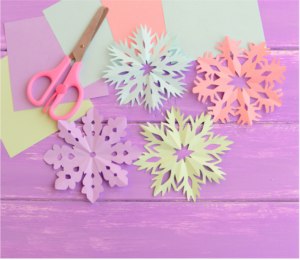The right tools can make all the difference between a classroom that flows smoothly and one that feels chaotic. Whether it’s organizing materials, improving classroom management, or just making daily tasks easier, these ten classroom tools will transform your teaching experience. Each tool listed is a teacher favorite for a reason—they save time, reduce stress, and help keep your space efficient and functional. Let’s dive into the essentials!
- Chime/ Bell/Door Bell: A Chime , bell, or a wireless doorbell is a must have classroom management essential for getting attention that can significantly change your teaching life. These simple yet effective devices allows you to transition your students’ focus from one activity to another with ease and efficiency. Instead of raising your voice or competing with classroom chatter, you can use an attention getter to signal the start of an activity, a reminder to quiet down, a 2-minute warning, or a call for attention or instructions.
Disclaimer: This post may contain affiliate links, which means I may earn a small commission at no extra cost to you if you make a purchase through these links. I only recommend products and resources that I believe will add value to your teaching experience.
2. Dark Rug with Seating Rows/ Seating Spots: If you teach elementary, you know that the best way to deliver instruction is by having students sit on the rug, not at their desk. Which is why this is one of the must-have classroom essential, and I promise you, it will make your teaching life easier. Having whole group instruction at the rug has many benefits:
- Minimized Distractions: When students sit on the rug, they’re less distracted by desk contents, enhancing their focus on the lesson.
- Enhanced Classroom Management: The rug creates a defined learning space, making it easier to supervise and manage students.
- Improved Communication: Close proximity during discussions fosters better communication, engagement, and participation.
- Calm Energy: With reduced need to raise voices, a calm and focused learning environment is maintained.
Although choosing a rug doesn’t seem like an big deal, it is. The right rug will make all the difference. When choosing a rug for your whole group instruction space, choose a rug that is
- big enough to fit at least 25-30 students
- dark color instead of pastel/light color
- with seating rows
- thick/heavy enough that it does not roll up
There are plenty of fun rugs out there, but my all-time favorite is this one from Lakeshore. It’s a bit pricey, but absolutely worth it! Sure, it might not be the cutest rug, but it’s hands-down the best. Each square is clearly marked, which makes assigning spots simple and shows each student exactly how much space they have—no boundary disputes! The color-coded rows also make it easy to release students in small groups and I like that the colors are the same going horizontally vs. vertically. This is because moving students in groups of 6 is more efficient than moving students in groups of 5. Plus, this rug is incredibly durable. Though it’s heavy, it’s built to last, and mine has held up beautifully over time.
So why the darker color? The answer: because it shows less stains. With light or pastel colored rugs, they look great at the beginning, but they show more stain overtime and makes it look like a dirty rug, even after it has been vacuumed.
I definitely would apply for a this rug through the DonorsChoose Program. This is a non-profit program that allows for people or organizations to donate to teachers’ project in public schools. Teachers can request for classroom materials or supplies that will support students in their class. It’s a great program and I’ve had projects that have been fully funded.

3. Student Mailboxes: The next must-have classroom management essential on my list is student mailboxes. Having a quick and simple system to return or send papers home is important when it comes to managing class papers! Depending on the grade level that you teach, you can purchase a shelf or a filing crate like the ones below. The shelf is a lot more expensive (definitely DonorsChoose that one) than the filing crate, but it might be easier for younger students to use. Label each slot or each folder with a number and assign students to a number (numbers are more efficient and can be reused year after year and only need to be replaced if torn or old). File corrected papers into students’ numbered slot or folder. Then, have students empty them every morning. This task is also easily assigned to a parent volunteer to do!
4. Book Bins: Of course, book bins have to be a must-have classroom essential! The key to buying book bins is to make sure you buy very sturdy and quality book bins. Book bins are great for keeping students materials organized —especially if they don’t have desks, but book bins are also really great for storing student books for independent reading. Label each book bin with a number (assigned to students) and have students put 3-4 books in their bin. During independent reading time, students can grab their bin and have it by their side, reducing the need to get up and exchange books. The less movement, the less management you have to do. This setup helps everyone stay focused, making reading time smoother and more productive.
Here are a few that I found on Amazon that could work for your classroom.
5.Classroom Easel: Although classroom easels may seem a bit old-school, I still find them to be an essential tool. I prefer using chart paper on the easel rather than the attached whiteboard, as it allows me to save each page for future reference. I love being able to flip to a fresh page when we start a new topic and still easily revisit previous charts to reinforce lessons. It’s incredibly helpful to just turn back to a previous day’s work to remind students of what we’ve covered.
I was lucky enough to be in a school that provided teachers with chart paper, but if your school doesn’t and you are wanting to get some chart paper, I linked some of my favorite ones below.
Ok, so how does an easel help with classroom management? Here are all the different ways I use my easel to keep my classroom running smoothly:
Display Daily Morning Message: Having the message visible all day helps remind students of the day’s schedule and expectations. This consistency reduces confusion and keeps everyone on track, setting a clear tone for the day.
Extra Board: Sometimes two boards are necessary for showing, explaining, or clarifying material. The easel acts as an extra space, allowing me to write or draw alongside the whiteboard, which helps students better understand complex ideas. Plus, I can use magnets to hang important visuals (e.g., vocabulary words, posters, or notes), which supports my lessons and reinforces key concepts.
Small Groups: The easel provides a large enough visual for everyone in a small group to see clearly, which is essential for keeping students engaged. It’s easier to focus on the lesson together when they have a clear visual reference right in front of them.
Anchor Charts: I use the easel to display anchor charts that reinforce the lesson. These large, visible charts serve as reminders of strategies, procedures, and concepts, helping students stay focused and on task.
To-Do List:
Using the easel to post a daily to-do list for independent activities or assignments gives students a clear structure. This helps them stay focused on what needs to be done without constantly asking for directions, promoting independence and minimizing disruptions.Brainstorming:
The easel serves as a visual tool for recording ideas during group discussions. This makes brainstorming more interactive, and students are more likely to stay engaged when they can contribute and see their ideas written down in real-time.Signs for Communication:
Writing messages, like “Welcome Back” or conference notes, on the easel and placing them outside the classroom door allows for quick, clear communication with parents and visitors. This small step helps foster a positive classroom environment and builds a connection between home and school.
And there you have it, my top 5 must-have classroom management essentials that will make your teaching life better. These classroom essentials will enhance your instruction, support students in their learning, and help you manage your classroom better!

















